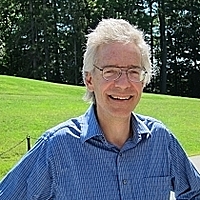Physics and Astronomy/Thayer Plasma Seminar - James LaBelle, Dartmouth College
Title: Radio Science at the South Pole: Auroral Hiss and Kilometric Radiation
Abstract: South Pole presents tremendous logistical difficulties as a research
site but is uniquely suited for radio science at 100-1700 kHz frequencies, because it is
thousands of kilometers distant from radio stations or beacons
which interfere with observations of natural radio emissions almost
anywhere else on Earth. Several types of natural auroral radio emissions
occupy this frequency band, including Auroral hiss, a broadband radio
emission associated with intensifications of auroral activity, and
Auroral Kilometric Radiation (AKR), a complex emission which is normally
beamed away from Earth and observed by distant spacecraft.
Recent South Pole observations reveal 100-Hz dispersive modulations of low
frequency auroral hiss, interpreted as a radio counterpart to optical
flickering aurora. Other recent observations reveal AKR fine structure
coincident wtih that detected in escaping AKR with satellites, providing
evidence for a connection between escaping and ground-level AKR.
These auroral radio emissions are important because they provide means of
remotely sensing ionospheric plasma conditions and processes, and they are
closely analogous to solar and planetary radio emissions which are much
less conducive to detailed study with ground-level instruments.
